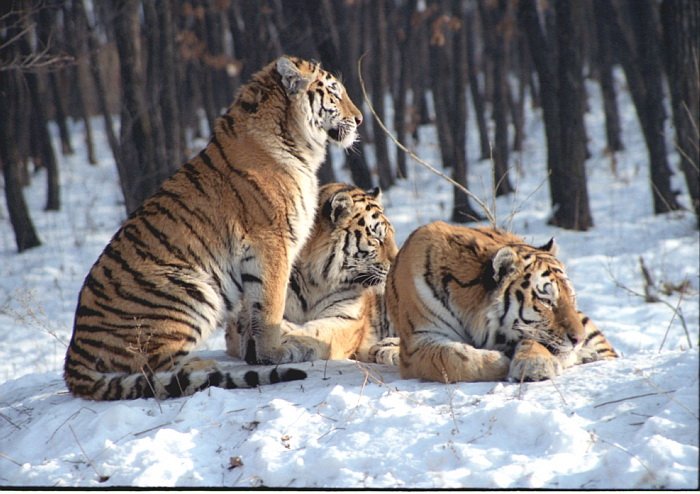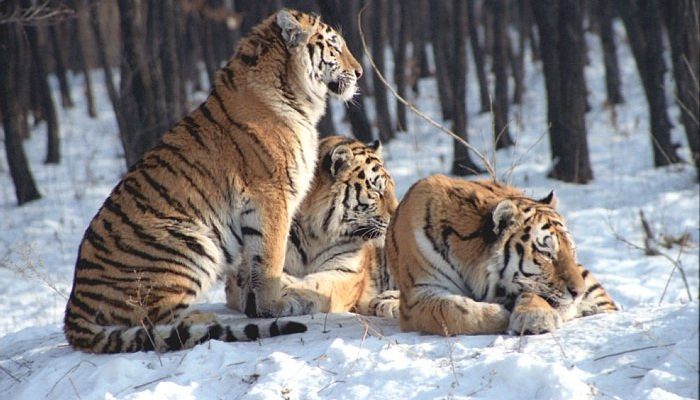
Let’s dive into what makes these tigers so important in their environment. From their hunting habits to their interactions with other species, each element contributes to a delicate web of life. So, grab a cup of coffee and let’s explore!
Understanding the Siberian Tiger’s Habitat
First, it helps to know where these incredible creatures live. The Siberian tiger, also known as the Amur tiger, primarily resides in the boreal forests of Eastern Russia. This vast, cold landscape provides essential features like plenty of prey and dense forests for camouflage. Imagine wandering through a snow-dusted forest where the trees tower high, their limbs heavy with frost. It’s a perfect hunting ground for a stealthy predator.
Within this habitat, you’ll find a variety of species, such as deer, boars, and even smaller mammals. The Siberian tiger relies on these animals for food. When a tiger hunts, it doesn’t just fill its belly; it also impacts the populations of these herbivores. If there were no tigers, these prey species would multiply rapidly, leading to overgrazing and a depletion of plant life.
Essentially, the Siberian tiger helps to keep the populations of its prey in check. This prevents any one species from dominating the landscape, which is vital for maintaining plant diversity and overall ecosystem health. Keep in mind, a balanced ecosystem is like a well-tuned orchestra, with each species playing its part in harmony.
Top Predator: The Siberian Tiger’s Role
As one of the biggest cats in the world, the Siberian tiger sits at the top of the food chain. This status is crucial for maintaining the health of its ecosystem. When tigers hunt and prey on other animals, they can help curb overpopulation. This, in turn, encourages a healthier balance between species.
Let me give you an example. Imagine a world where there are no Siberian tigers. The deer population might explode, leading them to overgraze on young plants and trees. Over time, this could result in barren areas that can’t support other wildlife, disrupting the entire ecosystem.
So, when you think about tigers, remember they aren’t just fierce hunters; they’re key players in their environment. By controlling herbivore populations, they help maintain plant life that benefits countless other species, from insects to birds, all of which depend on a healthy ecosystem.
The Importance of Biodiversity
Biodiversity is a term that gets thrown around a lot, but it really boils down to the variety of life in a particular habitat. The Siberian tiger contributes to this biodiversity in several ways. By preying on a range of animals, they help ensure that no single species becomes too dominant, which promotes a greater variety of plants and animals.
In their ecosystem, the presence of Siberian tigers encourages biodiversity because they influence the population dynamics of other species. Here’s where it gets interesting: a diverse ecosystem is generally more resilient. When you have various species, it’s like having a backup plan. If one species struggles due to disease or climate change, others can step in to fill the void.
Plus, biodiversity can lead to more robust ecosystems that require fewer resources. For instance, when diverse plants grow, they can better adapt to environmental changes. This is essential in a world where climate change is impacting habitats globally. The Siberian tiger, by maintaining this balance, plays a role in ensuring that life continues to thrive.
Impact on Soil Health
You might not immediately think of big cats when it comes to soil health, but here’s the thing: the Siberian tiger’s hunting practices can influence the health of the soil. When tigers hunt, they leave behind remnants of their meals—like bones and fur. These leftovers decompose over time, enriching the soil with nutrients.
With the nutrients added back into the ecosystem, plants flourish. Healthy plants not only provide food for herbivores but also improve soil structure, preventing erosion and promoting water retention. So, in a way, Siberian tigers are not just hunters; they are also natural gardeners helping to nurture their landscape.
Moreover, having a healthy soil ecosystem means that it can support a greater diversity of plants and animals. More plants lead to more food sources for other species, creating a thriving community within the forest. The tiger’s role here is a perfect example of how interwoven life is; one species’ actions can create ripples that benefit many others.
Threats to the Siberian Tiger and Its Ecosystem
Unfortunately, despite their importance, Siberian tigers face numerous threats in the wild. Habitat loss due to human activities—like logging and agricultural expansion—poses a severe risk. As forests shrink, so does their hunting ground, making it harder for these majestic cats to find food.
Additionally, poaching is a significant issue. Tigers are hunted not just for their majestic pelts but also for their bones, which are used in traditional medicine. This loss not only affects tiger populations but also disrupts the entire ecosystem. Fewer tigers mean an increase in herbivore populations, which can lead to the overconsumption of vegetation and soil degradation.
Conservation efforts are essential to protect these magnificent creatures and, by extension, their ecosystem. Organizations around the globe are working tirelessly to create protected areas and promote sustainable practices. Let’s hope they succeed—after all, the fate of the Siberian tiger is closely tied to the future of the beautiful, intricate ecosystems they help maintain.
The Role of Conservation Efforts
The future of the Siberian tiger is not only in the paws of these big cats but also in the hands of humans. Conservation efforts are vital in ensuring they can continue to play their role in the ecosystem. Protected areas, like the Sikhote-Alin Biosphere Reserve in Russia, help provide safe habitats where tigers can thrive without the threat of poachers and habitat loss.
Moreover, awareness and education are crucial. When people understand the significant role Siberian tigers play, they’re more likely to support conservation actions. This can include everything from donations to participating in preservation programs.
It’s a collaborative effort. Communities can engage in sustainable practices that help protect tigers and their habitats. By implementing eco-friendly tourism and responsible land use, we can create a future where both humans and wildlife can coexist.
In conclusion, the Siberian tiger is much more than just a powerful predator; it’s a vital part of its ecosystem. From controlling herbivore populations to enriching the soil, these big cats help maintain balance in their environment. Their existence is a reminder of the intricacies of nature and how every species, no matter how big or small, plays a role in the grand tapestry of life.
As we work to protect the Siberian tiger, we’re not just saving a beautiful species; we’re preserving a crucial element of our world’s natural balance. With thoughtful conservation efforts, we can help ensure that future generations will not only hear about these magnificent creatures in stories but will also witness their majestic presence in the wild.

